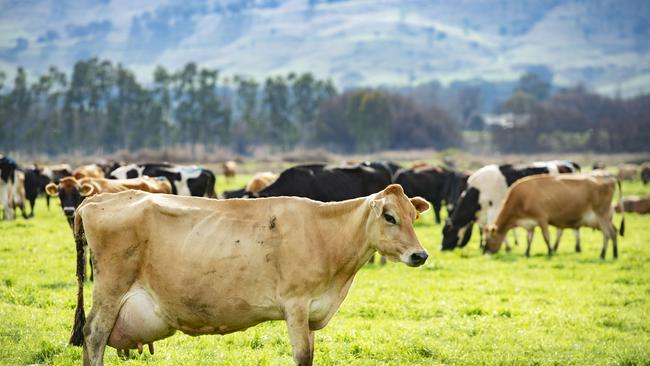Victorian dairy license figures: one in 10 dairy farms lost 2020-21
Victoria has lost a concerning number of dairy farmers in the past year with experts saying some and looking to switch beef cattle.

Victoria lost one in 10 dairy farms last financial year despite strong returns at the farmgate, alarming new figures reveal.
The latest licence statistics from Dairy Food Safety Victoria confirm there were 3088 bovine dairy licences statewide in the 2020-21 season, down by 10 per cent from 3462 licences in 2019-20.
Industry figures say the trend was in part precipitated by the 2016 ‘clawback’ by processors Murray Goulburn and Fonterra.
In the 2015-16 financial year, 4141 licences were in use across Victoria before dropping to 3889 in 2016-17.
Newly-elected Australian Dairy Farmers board member Ben Bennett said the fresh statistics were unsurprising, given other commodities over the boundary fence were performing strongly.
Mr Bennett, who operates a dairy farm at Pomborneit in southwest Victoria, said while dairy was enjoying a strong year, the sector was battling a long-term demographic drift.
“Dairy has always been a young person’s game,” he said.
“So farmers looking to retire, or semi-retire from dairying see the prices in beef, see the prices in sheep, and naturally look to giving that a go.
“It’s a factor in southwest Victoria, it’s happening in other parts of the country too.”
Victoria is not an isolated example of the downward dairy farm trend.
NSW had about 800 dairy farms at the start of the decade, with that figure now around 500.
Over the same time frame, Queensland has dropped from 550 farms to just over 300.
Dairy Australia senior analyst Sofia Omstedt said the number of dairy farms nationwide had declined by nine per cent in the past financial year.
“There is a long-term trend where farms are getting larger and fewer in number, not just in Australia but in many similar countries,” Ms Omstedt said.
“The average dairy farm had 300 cows in the 2020-21 (financial year), that’s up from 80 cows in 1980. Also, because there is a two year renewal process in Victoria, the latest figures reflect not only the past 12 months but a longer trend over the past two years.
“There are challenges for the sector with higher beef prices, which are one of the factors for farmers who are nearing retirement, who decide to move across to that sector.”
Mr Bennett said rising labour and other costs also made farmers reconsider their financial position, despite strong returns at the farmgate.
“You’ve got a shortage of labour, which puts up labour costs. You’ve got rising electricity prices and other inputs. And then the finished product of milk is being sold by the supermarkets at below the cost of bottled water, still. So the farmer is being squeezed.”





